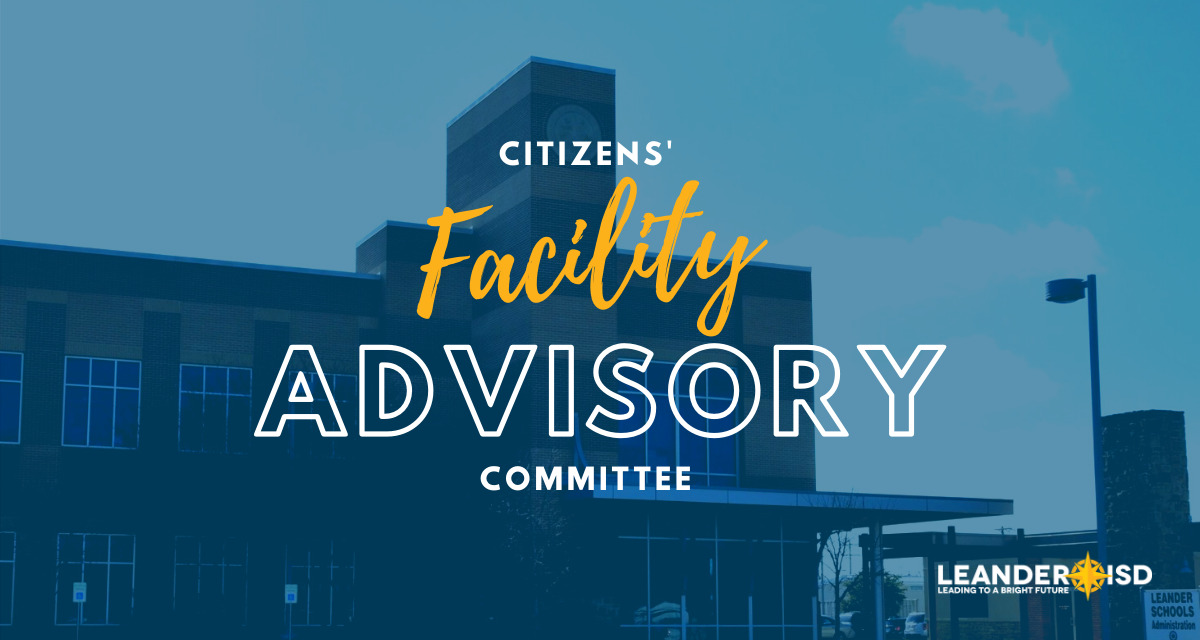After receiving certified values totaling more than 18% growth in properties, the district’s financial advisor increased the outlook for capacity should the district decide to bring a bond referendum to voters this year.
Depending on the time frame covered by the bond, ranging from three years to five years worth of projects, Leander ISD could afford up to $1 billion within the existing tax rate, PFM advisor Blake Roberts explained in his presentation to the Citizens’ Facility Advisory Committee (CFAC) meeting.
“Despite substantial growth in our total property values, our revenues remain unchanged for operations,” Chief Financial Officer Elaine Cogburn said. “There’s a new change in school finance that we are seeing the effect of. This is a new phenomenon as a result of House Bill 3. If we want to continue to maximize resources for our teachers, staff, and in classrooms, we need to think and act differently when it comes to our bond dollars.”
The CFAC meeting comes less than one week after the larger group of subcommittee members presented $1.5 billion in potential projects, covering elementary, middle, and high schools, as well as ancillary or support services and technology.
Committee Considers High School of Choice, Delaying Need for High School 7
The recommendation from the high school subcommittee included the construction of a school of choice and building a new facility for the district’s current alternative school, New Hope High School.
Schools of Choice are smaller schools with special or targeted programming around a specific program or area of focus. The recommended option would provide a new choice for high school students while also delaying the need for a seventh high school. Pursuing that option would also eliminate the need to construct the district’s eighth high school, saving $174 million while still addressing capacity issues in existing high school buildings.
“We have been discussing schools of choice and increased opportunities for specialized programs for years,” Chief Academic Officer Matt Bentz, Ed.D. said. “When we look at the achievement data, we see access gaps we might be able to address with a school of choice. We also have heard from students in senior exit surveys that this type of programming would have been attractive.”
Committee members discussed and questioned how schools of choice would be implemented, including how extracurricular programs, like athletics and fine arts, would be provided, and how enrollment would be impacted.
The district has been exploring schools of choice for many years through various committees. Lots of options exist for configuration and course offerings. One of the options is an Early College High School where 400-500 students who locate on or near an Austin Community College campus to focus on a highly rigorous curriculum where by their junior year, classes are almost exclusively with ACC professors for college credit.
Explaining the Finances
For LISD, the best option for funding school construction and major renovation projects is through the issuance of voter-approved bonds in order to maximize other funding sources for paying teachers, providing instructional resources, and managing the day-to-day expenses for operating schools.
State law compresses the tax rate for Maintenance and Operations (M&O) tax collections as property values rise. This tax rate compression caps the funding available for teacher and staff salaries and operations on an annual basis. In contrast, increases in property values generate more tax collections on the Interest and Sinking (I&S) or debt service side. This provides additional capacity on the debt side and the ability to fund future bond issues with no increase in the tax rate. This shift in funding requires the district to reconsider how large renovation or maintenance projects are funded.
Texas school districts use their Interest and Sinking (I&S) or debt service tax rate to pay for bonds issued to build new facilities, purchase capital equipment, and maintain existing facilities. The state of Texas provides limited assistance to school districts for funding facilities through the EDA and IFA programs for which LISD does not qualify due to the level of property values within the district.
Recap from Bond 2017
In 2017, Leander ISD went to voters with a $454 million bond proposition that addressed a trio of initiatives:
- Growth (new schools and support facilities)
- Improvements (technology upgrades, program facility renovations )
- Safety (secure vestibules at all schools, traffic gates)
Prior to the November 2017 election, the district’s previous bond election was in 2007. The community committee responsible for reviewing the projects in 2017 identified about $1 billion projects before reducing the final total by more than 50 percent. The district will soon begin construction of the final school in the 2017 bond, elementary school 29, located in the Bryson subdivision in Leander. The school will open in August 2022.
Next Steps
The 24-member community leadership group, CFAC, will work over the next few weeks to build a report for the June 17 Board of Trustees meeting. The Board will hear an update presentation at the meeting from the CFAC Steering Committee Co-Chairs this Thursday, May 20. If they decide to call a bond election for November, the Board would need to take action by August 16.


